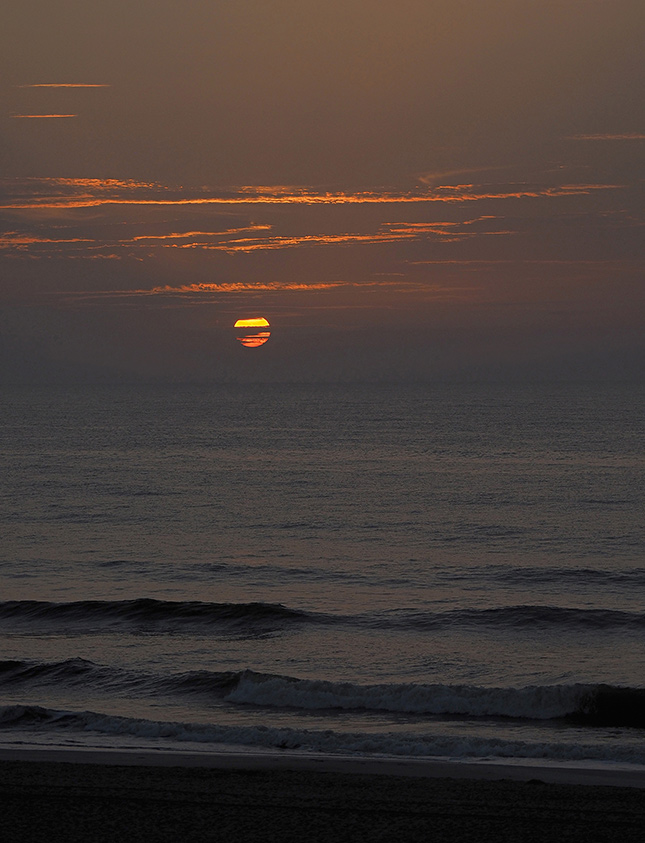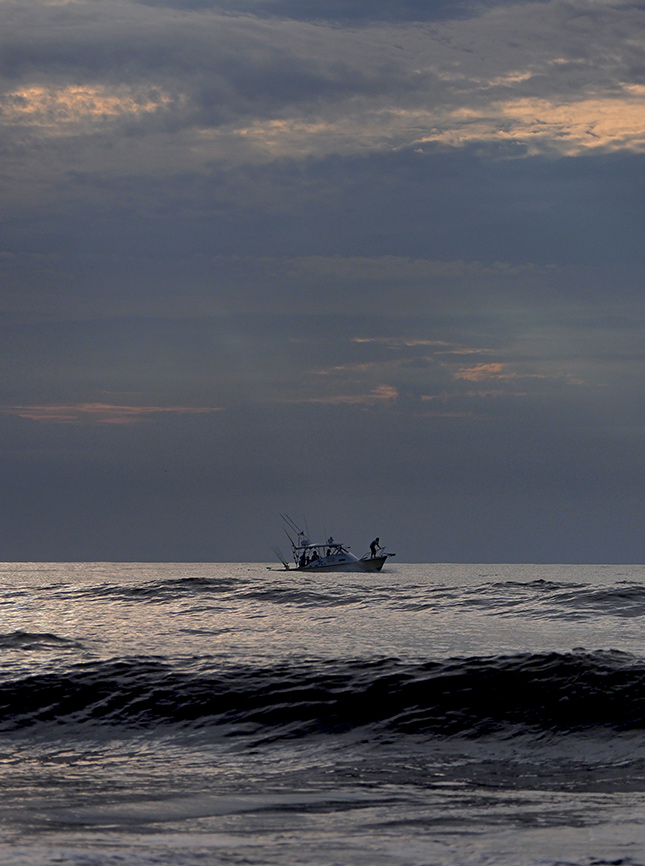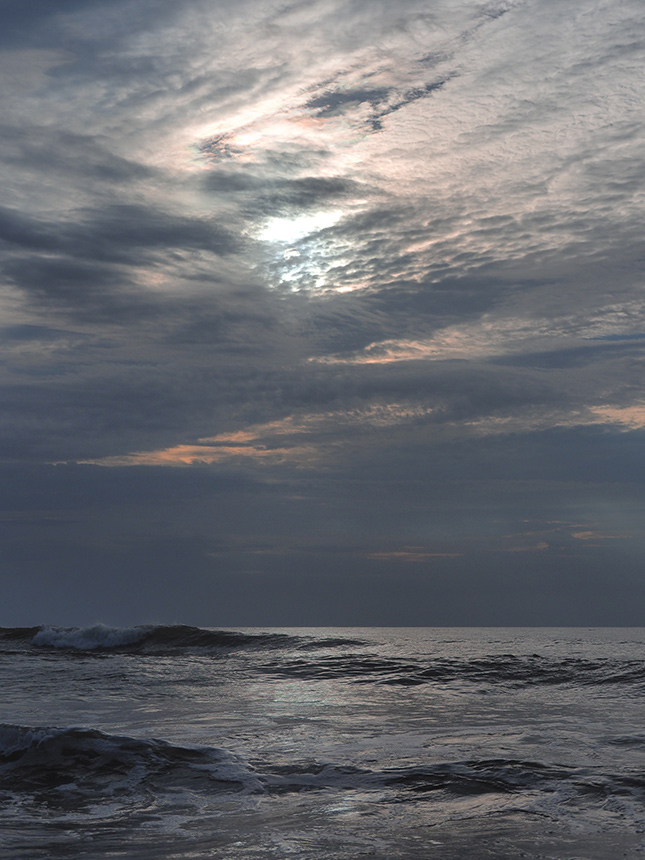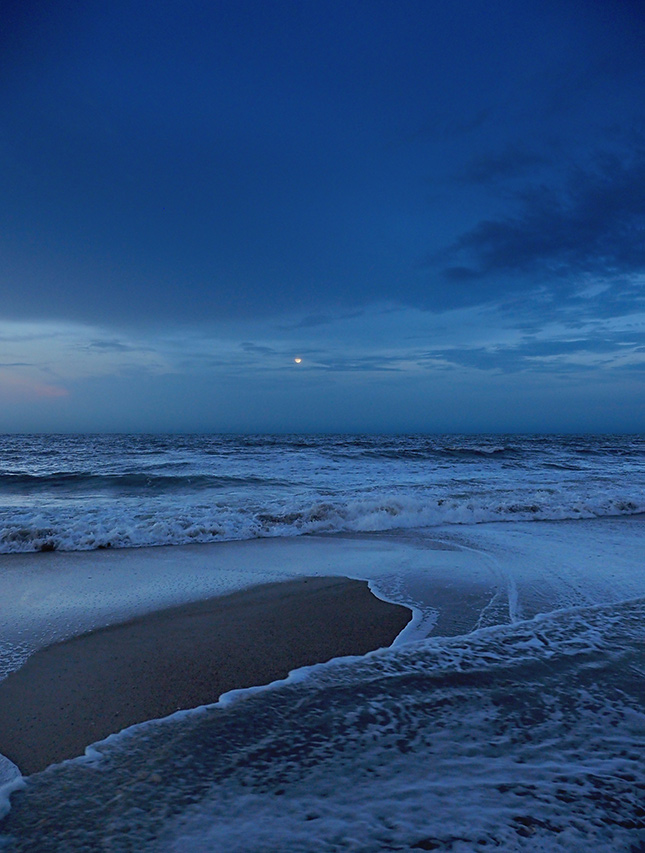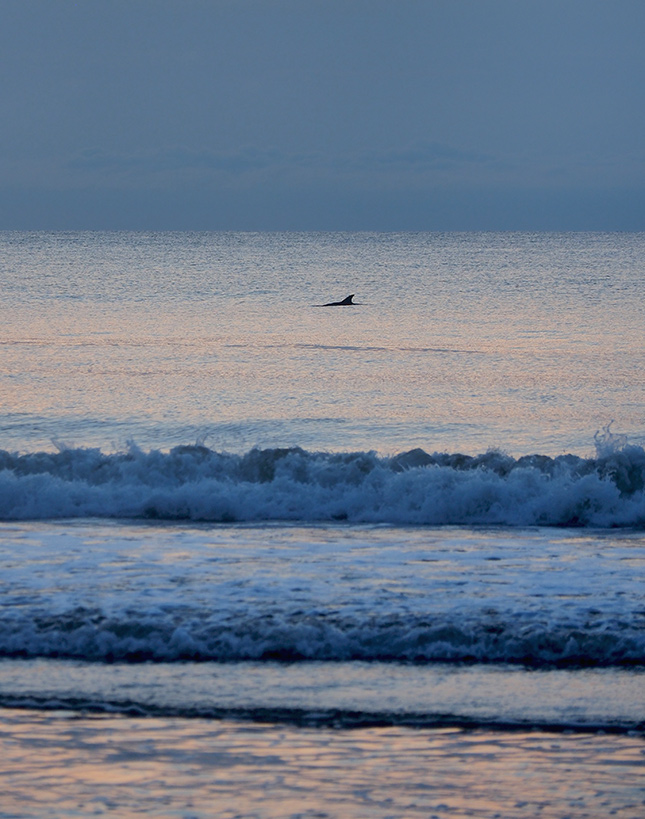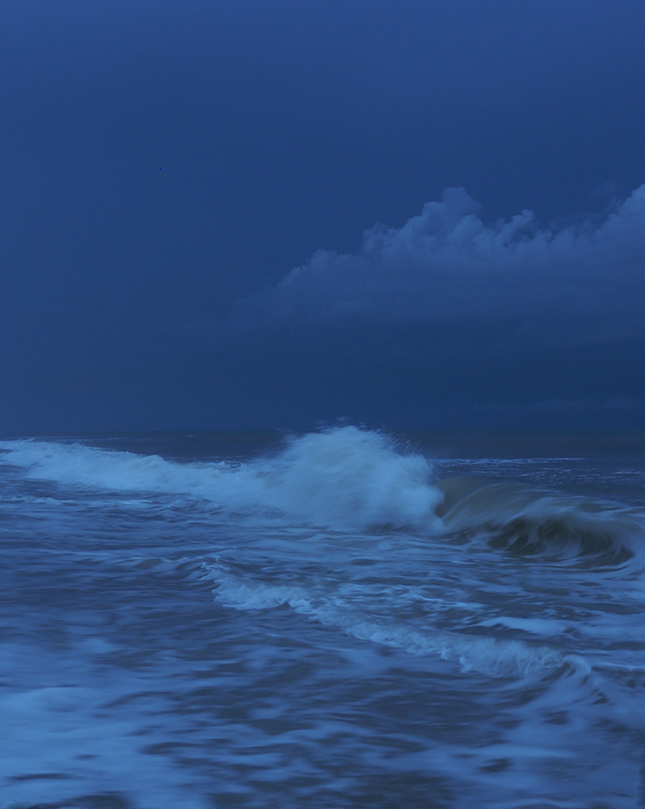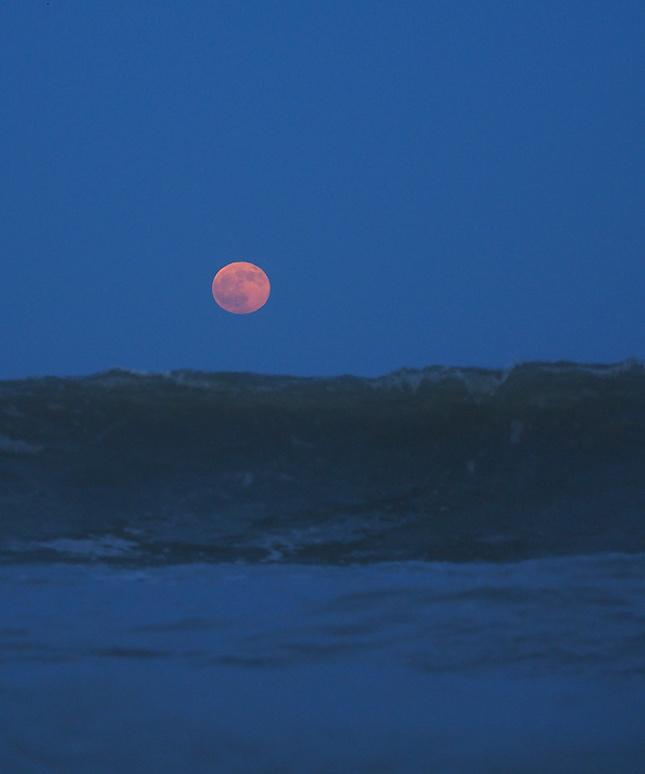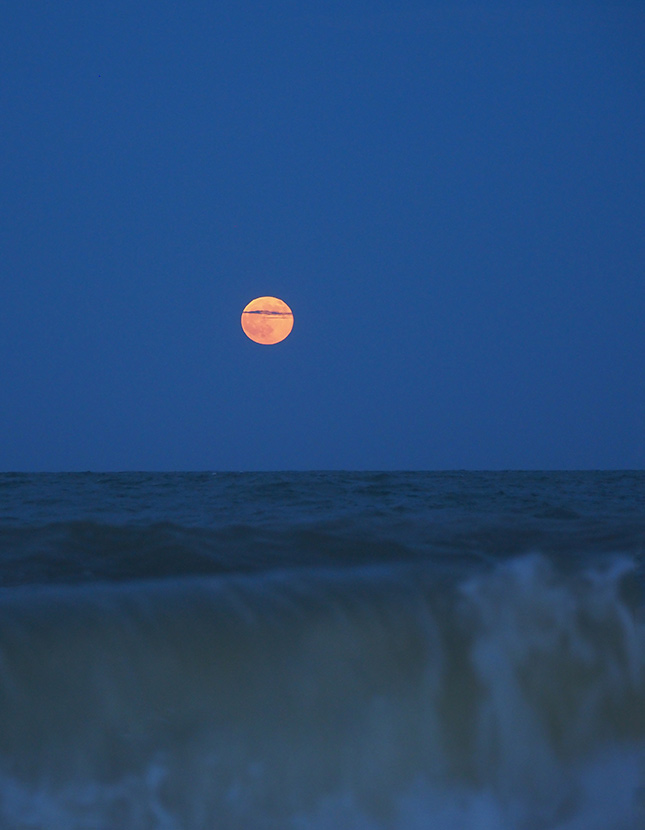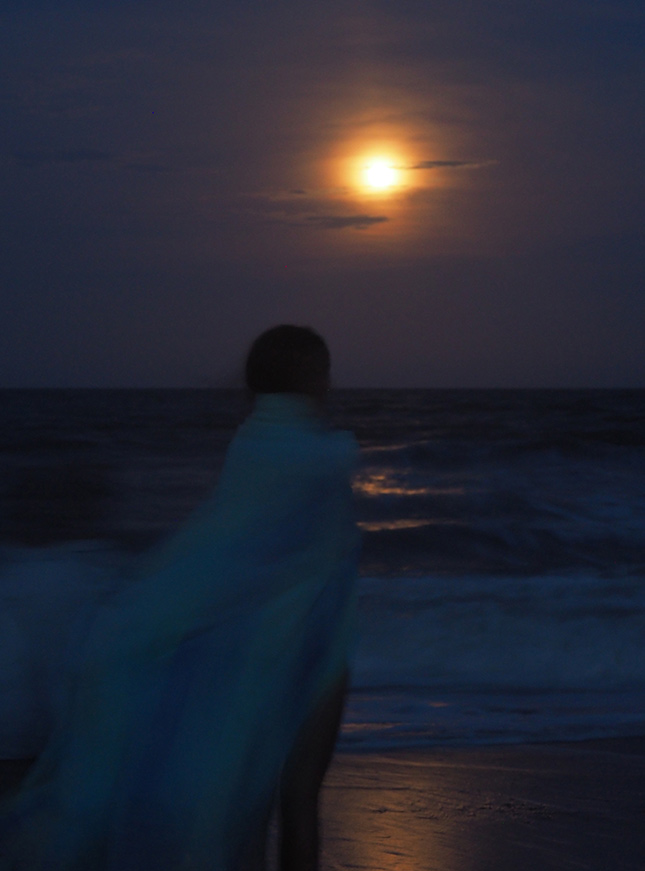Ghost of the Sun: A pre-eclipse photo essay with the Olympus E-M1 II + 12-100mm f/4 Pro
posted Saturday, August 19, 2017 at 12:57 PM EST
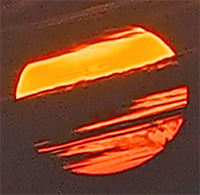
We're just a few days away from the Great American Eclipse, happening midday this Monday, August 21st, across the continental USA. I was in the middle of culling images from a shoot with the Olympus 12-100mm f/4, and the clouds across the Atlantic briefly obscurring the sun reminded me that we are now oh-so-close to that historic occassion.
When the sun goes dark
The moon is already in many ways a ghost, so for it to be eclipsed by the earth is certainly a novelty. But the sun is a prime force, a giver of life, and one of the earliest entities to be treated by humans as a god. For it to suddenly be completely erased from the midday sky has to hit us at least somewhat near our primeval core.
(Images have been resized to fit this page and altered in post-production, primarily to balance shadows and highlights. Full resolution versions of the original and edited versions are available via the included links, with additional images and EXIF data available in our Olympus E-M1 Mark II Gallery.)
The relative impact of a total solar eclipse
I was 13 when a total eclipse graced portions of the upper western US states in February 1979. We were treated to a partial eclipse that day in school in the southeast, where we stepped out of class to witness the moon sliding across the sun through a pinhole projected onto a piece of paper. Even a partial eclipse imparted a bit of shock and awe value to my 13-year-old system, and I wasn't surprised to later learn that solar eclipses can be disquieting to some. Here's an interesting excerpt from that particular eclipse:
Writer Annie Dillard viewed the eclipse from the Yakima Valley, in central Washington State. Dillard describes a nearly overwhelming emotional experience, as suggested in this quotation: "I pray you will never see anything more awful in the sky." Describing the reactions of other onlookers, she relates "I heard screams." (From Wikipedia)
We got a far greater show in May 1984, my senior year in high school and a year of increasing Orwellian fame, as an annular eclipse swept through the southeast and we once again used the pinhole method, as eclipse glasses weren't yet such a prevalant thing at that time. An annular eclipse is only different from a total one in that the moon isn't quite as big in the sky at that point in the lunar season, and therefore doesn't ever completely block out the sun. In other words, from the immortal Johnny Cash, you're still left with a "Ring of Fire."
12-100mm f/4 IS Pro: A vacation lens for all seasons
In my 5+ years at Imaging Resource I've seldom seen a new lens cross the threshhold into our headquarters that has stirred up quite as much interest as the Olympus 12-100mm f/4 Pro. It raised eyebrows throughout our review ranks, even by some personally entrenched in other camps and not as interested in the Micro Four Thirds world. Being an MFT shooter myself, I had somewhat of an opposite initial reaction, wondering if a lens that only offered f/4 at the brightest would really wow anyone, especially given its price.
Ah... but I now know what all the fuss was about. Not only did the lens win a well-deserved award from us, and test marvelously in the lab, but it's simply the easiest choice for a versatile vacation lens in the MFT world, with no close competitor at this time for sheer quality and versatility. I was headed out for a family vacation to a decidedly outdoors destination and brought it along as an afterthought, and ended up spending a great deal of time with it at my side throughout.
Our destination along the Florida coastline has wind and sand, seaspray and sun, waves galore, occassional afternoon showers, and all manner of creatures. In short, this wasn't an environment conducive to changing lenses often. In fact, I ended up only removing it once in our seven days there, in order to shoot a family portrait at dusk with the Olympus 25mm f/1.2 Pro, as I simply needed a lot more light for that time of day. Otherwise, it was all 12-100mm f/4 for me and my seaside trevails.
Creatures big and small
It's anyone's guess what the wildlife of the world thinks during a total solar eclipse. Given that animals are arguably as vastly distributed for personality types as human variations, it would stand to reason that their reactions will be all over the map, perhaps ranging from concerned to just mildly curious.
Can the more intelligent creatures of the world intuit what's happening during
a total eclipse?
[original • edited]
And what of Mother Earth herself... will she become confused or angry when the day turns to dusk at the wrong time? Not likely, but it's interesting to speculate.
The eclipse will eventually pass directly over the beautiful port city of Charleston, South Carolina. Will the local shrimp boats and seafaring sailors entertain just a hint of ancient celestial doubts about the seas that day?
Conclusion
As spectacular as my previous few solar eclipse experiences certainly were, Monday's eclipse will still mark the first time that I, in my 51 years of life on planet Earth, will have experienced a total solar eclipse. I have special glasses for my wife and children to wear, but I intend to watch the world around me. We'll be at a state park wildlife refuge, and I hope to get a glimpse of perhaps mild curiosity from a lone wolf or deer. And, as you may have already guessed, I'll have the 12-100mm f/4 by my side, just in case.
Olympus E-M1 Mark II Gallery • Olympus 12-100mm f/4 IS Pro
[Editor's note: Please use caution if you plan to use glasses to stare directly at Monday's eclipse. And for anyone old enough to recall the Star Trek episode when Mr. Spock forgot to use his special protective specks to stare at The Medusan ambassador Kollos ("Is There No Truth In Beauty?") please be warned that, as with staring directly at a Medusan, staring directly at an eclipse of the sun can cause both blindness and, if you're prone to such thing, perhaps a touch of madness as well.]
